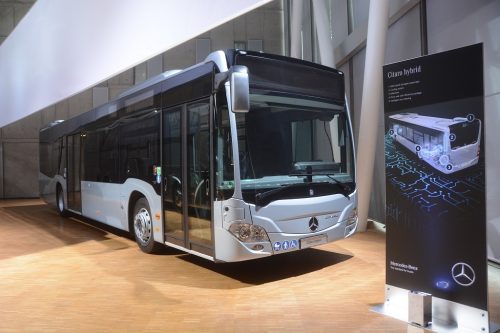Daimler has unveiled a commercially viable, mild hybrid version of the Mercedes-Benz Citaro that will be available in right-hand drive in the UK from mid-2018. That and the new Tourismo RHD coach, launched in June, are just two of the product innovations coming to the British Isles that will be highlighted at Busworld Europe, Kortrijk next month as Andy Izatt explains
Daimler announced last year that the Citaro ‘E-Cell’ electric will go into series production in 2018. Head of Development at Daimler Buses, Gustav Tuschen told CBW at the manufacturer’s pre Busworld Europe, Kortrijk press briefing in Stuttgart last week that it remains on schedule and the hope is that a right-hand drive version would be available in 2019. The fully electric bus would be able to cover 90-95% of bus routes although also offering a fuel cell range extender is under consideration.

By subscribing you will benefit from:
- Operator & Supplier Profiles
- Face-to-Face Interviews
- Lastest News
- Test Drives and Reviews
- Legal Updates
- Route Focus
- Industry Insider Opinions
- Passenger Perspective
- Vehicle Launches
- and much more!


